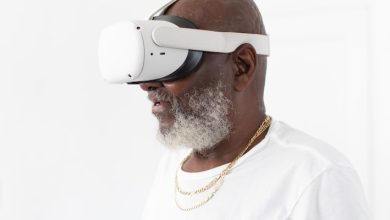Smart Homes: The Integration of IoT in Daily Life

- Understanding the Role of IoT in Smart Homes
- The Benefits of Integrating IoT in Daily Life
- Exploring the Latest Trends in Smart Home Technology
- How IoT is Revolutionizing Daily Routines
- The Future of Smart Homes and IoT Integration
- Challenges and Solutions in Implementing IoT in Smart Homes
Understanding the Role of IoT in Smart Homes
The Internet of Things (IoT) plays a crucial role in transforming traditional houses into smart homes. IoT devices are interconnected through the internet, allowing for seamless communication and automation within the household. These devices can range from smart thermostats and lighting systems to security cameras and voice assistants, all of which work together to enhance convenience, efficiency, and security in daily life.
One of the key benefits of IoT in smart homes is the ability to remotely monitor and control various aspects of the household. With IoT-enabled devices, homeowners can adjust the temperature, turn on/off lights, and even lock/unlock doors from anywhere using their smartphones or tablets. This level of connectivity not only improves convenience but also helps in saving energy and enhancing overall safety.
IoT also enables smart homes to learn and adapt to the preferences and routines of the residents. By collecting and analyzing data from sensors and devices, smart systems can optimize energy usage, suggest personalized settings, and anticipate the needs of the users. This adaptive intelligence not only simplifies daily tasks but also contributes to a more comfortable and efficient living environment.
Furthermore, the integration of IoT in smart homes enhances security measures through real-time monitoring and alerts. Smart cameras, sensors, and alarms can detect unusual activities and trigger immediate notifications to homeowners or security services. This proactive approach to security not only deters potential threats but also provides peace of mind to residents, knowing that their homes are well-protected.
In conclusion, IoT technology is revolutionizing the way we interact with our living spaces, making them more convenient, efficient, and secure. The integration of IoT in smart homes not only enhances daily life but also paves the way for a more connected and intelligent future.
The Benefits of Integrating IoT in Daily Life
Integrating IoT in daily life through smart homes provides numerous benefits for individuals and families. By connecting various devices and systems to the internet, smart homes enable automation, remote monitoring, and improved efficiency in daily tasks.
One key benefit of IoT integration in daily life is increased convenience. Smart homes allow for the control of various devices such as thermostats, lights, and security systems through a single interface, typically a smartphone or voice assistant. This centralized control simplifies daily routines and enhances comfort within the home.
IoT integration also promotes energy efficiency and cost savings. Smart thermostats, for example, can learn household schedules and adjust temperatures accordingly, reducing energy waste. Smart lighting systems can automatically turn off lights in unoccupied rooms, further conserving electricity. These energy-saving features not only benefit the environment but also lead to lower utility bills for homeowners.
Another advantage of incorporating IoT in daily life is enhanced security. Smart home security systems can include features such as motion sensors, surveillance cameras, and smart door locks that provide real-time alerts and remote monitoring capabilities. This added layer of security offers peace of mind for homeowners, whether they are at home or away.
Moreover, IoT integration in daily life can improve health and well-being. Smart health monitoring devices, such as wearable fitness trackers or smart scales, can help individuals track their physical activity, sleep patterns, and overall health metrics. This data can empower users to make informed decisions about their lifestyle and well-being.
In conclusion, the integration of IoT in daily life through smart homes offers a multitude of benefits ranging from convenience and energy efficiency to enhanced security and improved health. By embracing IoT technology, individuals can transform their living spaces into smart, connected environments that streamline daily tasks and enrich their quality of life.
Exploring the Latest Trends in Smart Home Technology
Smart home technology is constantly evolving, with new trends emerging regularly. One of the latest trends in this field is the integration of Internet of Things (IoT) devices into daily life. These devices, such as smart thermostats, lighting systems, and security cameras, are designed to make our homes more efficient, convenient, and secure.
One key trend in smart home technology is the focus on energy efficiency. Smart thermostats, for example, can learn your heating and cooling preferences and adjust the temperature accordingly, helping you save money on energy bills. Similarly, smart lighting systems can be programmed to turn off when you leave a room, reducing energy waste.
Another major trend in smart home technology is the emphasis on convenience. IoT devices can be controlled remotely via smartphone apps, allowing you to adjust settings or check on your home while you’re away. For example, you can turn on your lights or adjust your thermostat from the office, ensuring that your home is comfortable when you return.
Security is also a top priority in smart home technology. IoT devices like smart locks and security cameras can provide peace of mind by allowing you to monitor your home from anywhere. Some systems even offer features like motion detection and real-time alerts, adding an extra layer of protection.
Overall, the latest trends in smart home technology are focused on creating a more efficient, convenient, and secure living environment. By integrating IoT devices into our daily lives, we can enjoy the benefits of modern technology while simplifying our routines and enhancing our peace of mind.
How IoT is Revolutionizing Daily Routines
The integration of IoT in daily life has revolutionized daily routines, making tasks more efficient and convenient. Smart homes are at the forefront of this transformation, utilizing IoT devices to automate various functions within the household. From controlling the thermostat to managing home security, IoT technology has made it easier for individuals to streamline their daily activities.
One of the key benefits of IoT in smart homes is the ability to remotely monitor and control devices through smartphone apps. This level of connectivity allows homeowners to adjust settings even when they are not at home, providing peace of mind and convenience. For example, individuals can turn off lights, lock doors, or even adjust the temperature before arriving home, saving time and energy.
IoT devices in smart homes also offer personalized experiences through data collection and analysis. By tracking habits and preferences, these devices can anticipate needs and adjust settings accordingly. For instance, smart thermostats can learn preferred temperature settings over time and automatically make adjustments to optimize comfort and energy efficiency.
The Future of Smart Homes and IoT Integration
The future of smart homes lies in the seamless integration of Internet of Things (IoT) technology into daily life. As technology continues to advance, smart home devices are becoming more interconnected, allowing for greater convenience and control for homeowners. From smart thermostats that learn your preferences to smart security systems that can be monitored remotely, the possibilities for IoT integration in smart homes are endless.
One of the key benefits of IoT integration in smart homes is the ability to automate tasks and make your home more efficient. For example, smart lighting systems can adjust the brightness and color of lights based on the time of day, helping to create the perfect ambiance for any occasion. Smart appliances can also be controlled remotely, allowing you to start your laundry or preheat your oven on your way home from work.
In addition to convenience, IoT integration in smart homes can also enhance security and safety. Smart cameras and doorbells can provide real-time alerts and video footage of any suspicious activity around your home. Smart locks can be controlled from your smartphone, allowing you to grant access to visitors or service providers even when you’re not home.
As the technology behind smart homes and IoT integration continues to evolve, we can expect to see even more innovative solutions that make our lives easier and more connected. Whether it’s through voice assistants, wearable devices, or interconnected sensors, the future of smart homes is bright and full of possibilities. Embracing this technology can help us create a more efficient, secure, and comfortable living environment for years to come.
Challenges and Solutions in Implementing IoT in Smart Homes
Implementing IoT in smart homes comes with its own set of challenges that need to be addressed in order to ensure a seamless integration. One of the main challenges is the interoperability of different devices and systems within the smart home ecosystem. Ensuring that all devices can communicate effectively with each other is crucial for the overall functionality of the system.
Another challenge is the issue of security and privacy. With the increasing number of connected devices in a smart home, the risk of cyber attacks and data breaches also rises. It is important to implement robust security measures to protect the privacy and personal information of the homeowners.
Furthermore, the complexity of setting up and managing multiple IoT devices can be overwhelming for some users. Providing user-friendly interfaces and clear instructions can help alleviate this challenge and make the smart home experience more accessible to a wider audience.
One solution to these challenges is the development of industry standards and protocols that can ensure the compatibility and security of IoT devices. By adhering to these standards, manufacturers can create products that work seamlessly together and provide a more secure environment for users.
Additionally, the use of artificial intelligence and machine learning algorithms can help automate and optimize the performance of smart home devices. These technologies can learn user preferences and patterns to provide personalized experiences and improve the overall efficiency of the system.



